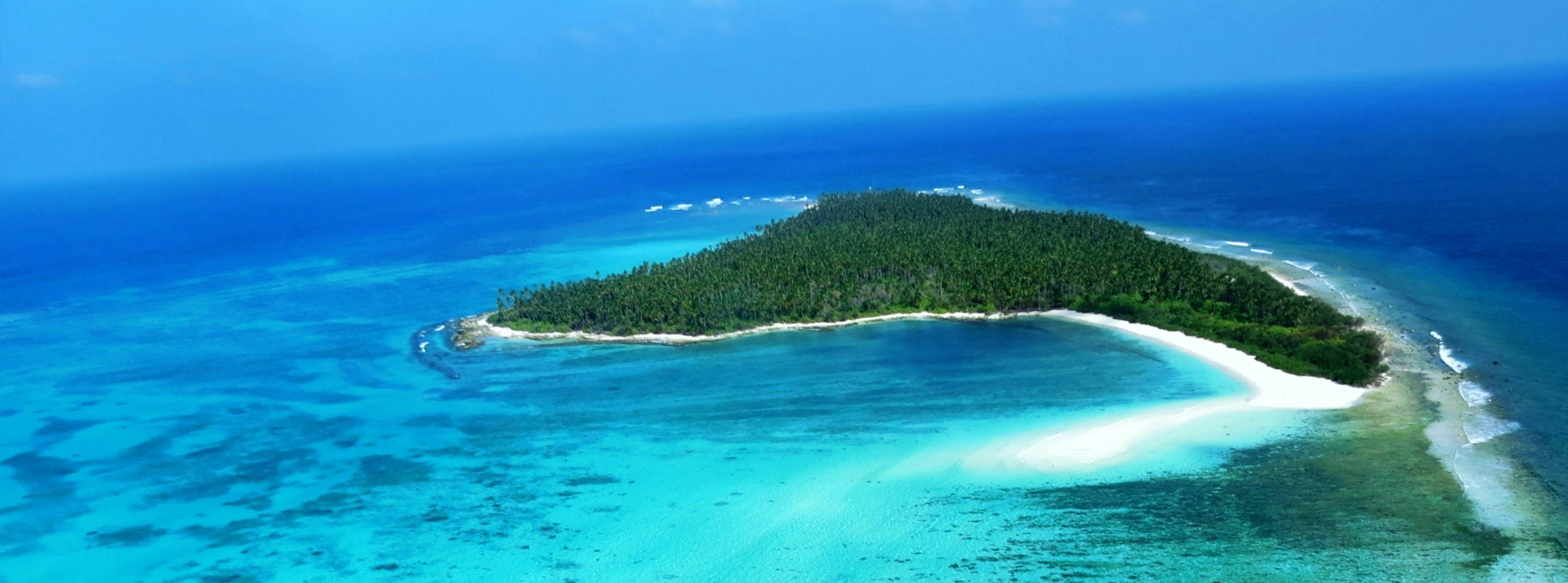Translating to 'one hundred thousand islands' in Malayalam, Lakshadweep was formerly known as the Laccadive Islands. 400 km off the southwest coast of the Arabian Sea is Lakshadweep, home to some of the most stunning and unique islands and beaches in all of India. With a combined area of 32 square kilometres, the 36 islands make up the smallest union territory in India. It consists of five submerged banks, three reefs, and twelve atolls, ten of which are inhabited. Lakshadweep is a paradise for those who enjoy scuba diving, snorkelling, and other water sports because of its breathtaking coral reefs. The islands are renowned for their rich cultural legacy, which includes European, Arab, and Indian customs.
The usual entry point to Lakshadweep is Kochi, Kerala, and all visitors—including Indians—need a permit to enter the area. Foreigners are only allowed to visit Agatti, Bangaram, and Kadmat Islands after obtaining a permit. You can get permits directly from Kochi. Government employees, active military personnel, and their families who are working or vacationing on these islands are exempt from obtaining a permit. Furthermore, taking the MV Kavaratti on the Lakshadweep Samudram Cruise is a unique marine experience. You visit Minicoy, Kalpeni, and Kavaratti islands during this five-day voyage. Another amazing 5-day trip is the Cordelia Cruise, which departs Mumbai and travels to Lakshadweep.
Fresh fish from the nearby waterways is used in the mouthwatering seafood cuisine that the islands are renowned for. Tourists can enjoy mouthwatering native cuisine, like prawn curry, grilled fish, and dishes with coconut flavouring. Lakshadweep offers delicious food and water activities, but it also has a rich cultural history that is well worth seeing. In addition to learning about the distinctive customs and traditions of the area, visitors can tour traditional island villages and engage in community interaction. The historical landmarks and monuments that can be seen on the islands, such as old mosques and temples, demonstrate the variety of cultural influences that have shaped Lakshadweep over the ages.
The isolation of the Lakshadweep islands may be part of their allure. They are off the main path and don't draw large crowds of partygoers to their coasts. Despite their shared mystique and beauty, each island provides a different combination of tourist attractions. While some islands have been constructed for water sports and diving, others have been developed for people to enjoy the peaceful atmosphere.
Best time to visit Lakshadweep
September through February are the finest months to visit Lakshadweep because of the beautiful weather and perfect temperatures for sightseeing and outdoor sports. The average temperature during this time of year is between 25°C and 30°C, which makes it comfortable to explore the breathtaking islands and engage in water sports like diving and snorkelling. The post-monsoon and winter seasons, which coincide with September to February, guarantee less precipitation and bright skies, improving the whole experience for guests. March through May are also pleasant months, although the temperature will rise by two or three degrees. Many activities are suspended during the monsoon months of June through August due to the high heat, intense rainfall, and excessive humidity.
How to Reach Lakshadweep
The only ways to get to Lakshadweep are by plane and boat. It is located in the Arabian Sea approximately 400 kilometres distant from India's western coast. There are a total of seven passenger ships that travel from Lakshadweep to Cochin. Aggati is home to its airport, which is only connected to Kochi Airport. There are two ways to get from one island to another in the Lakshadweep group: via ferry or by hiring a helicopter.
